Elk
Elk or Wapiti? Early explorers named it elk. Although, the elk is similar to the Europe’s red deer, the name adopted was a mimicry of the European word for a moose: elch. This confusion led to the Shawnee’s name, wapiti (meaning, white rump) being proposed. So, the elk and wapiti are the same animal, the Cervus elaphus. I have never heard the term, wapiti, used locally.
The elk is the second largest member of the deer family living around the Lake; the largest is the Moose. There are four extant subspecies of elk in North America; the local one is the Rocky Mountain Elk (Cervus elaphus nelsoni).
This nocturnal creature is primarily a grazer feeding on woody vegetation and lichen. In the summer it likes open mountain pastures and in the winter dense woods. It is far more abundant in the East Kootenays (along the Rocky Mountain Trench), but there are small herds in the mountains around Kootenay Lake where it is most likely to be seen in the late evening or early dawn hours.
On more than one occasion, I have heard dismissive remarks claiming elk weren’t indigenous—as if, like the horse, they had been introduced. This is a misconception. Granted, the present population probably benefited from a provincial restoration program in the early twentieth century.
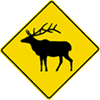 A road sign warning locals to watch for elk on the highway.
A road sign warning locals to watch for elk on the highway.
Yet, local elk seemed to have not suffered the nineteenth–century decline seen elsewhere: in 1911, The Yearbook of British Columbia speaks of the “fair number in southeast Kootenay, where they are protected.”
Unlike the horse, the elk is not an introduced species; it has been here since the last ice age. But, like Kokanee, elk have received support. In the end, David Shackleton was able to comment in Hoofed Mammals of British Columbia, (Royal BC Museum, 1999): “The present distribution of Rocky Mountain Elk is thought to be about the same as it was in the 1700s and early 1800s”.
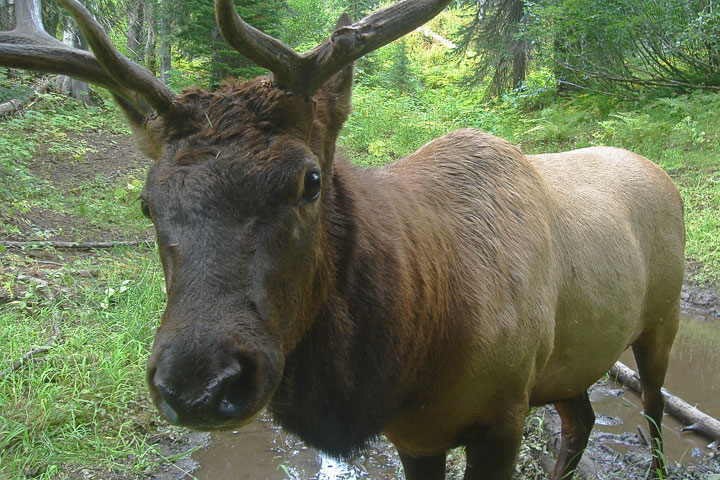 The elk has a dark face, dark legs, a dark shaggy mane, but a tawny body. The male grows antlers; females do so only rarely.
The elk has a dark face, dark legs, a dark shaggy mane, but a tawny body. The male grows antlers; females do so only rarely.
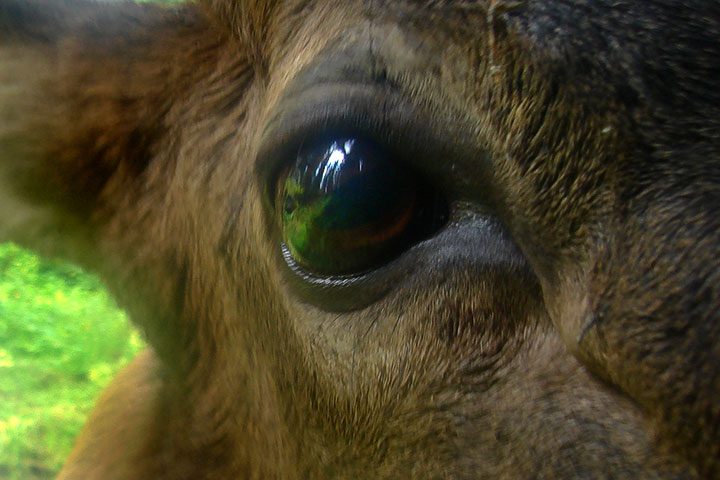 It may be time to back away; this fellow is close.
It may be time to back away; this fellow is close.
 The name, wapiti, arose from a native name meaning, white rump.
The name, wapiti, arose from a native name meaning, white rump.
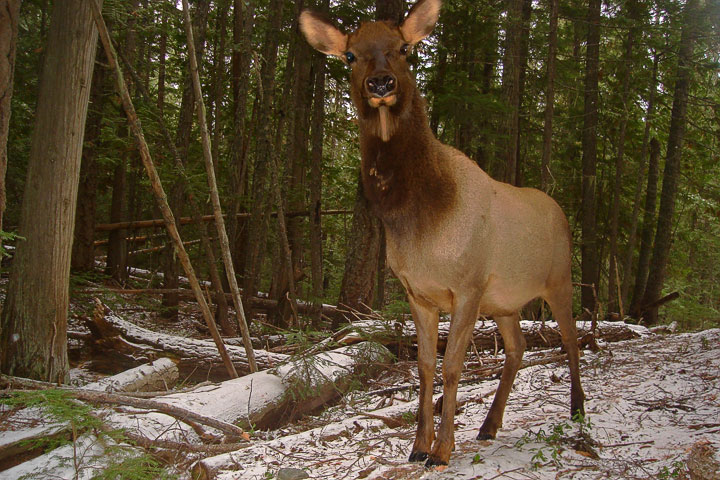 An elk cow stands in the first dusting of snow in late November.
An elk cow stands in the first dusting of snow in late November.
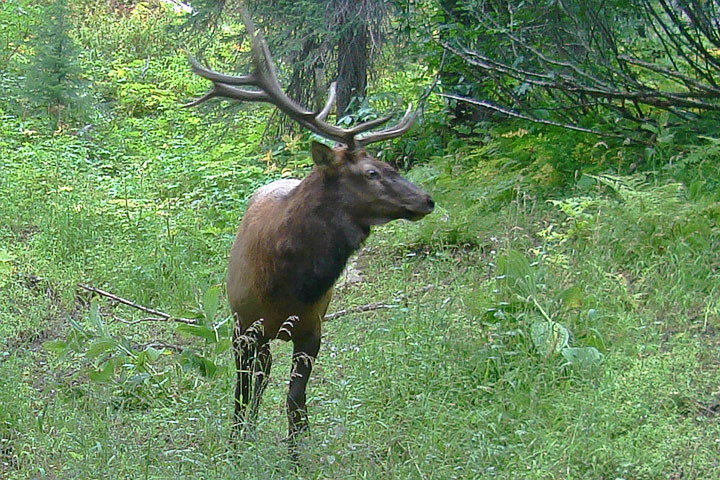 The distinctive elk antlers sweep back behind the head and have tines rising out of the main beam.
The distinctive elk antlers sweep back behind the head and have tines rising out of the main beam.
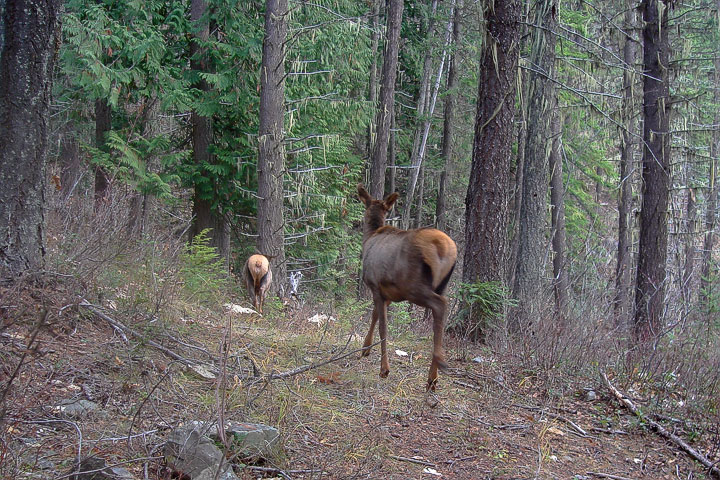 A calf follows its mother up a trail in mid November.
A calf follows its mother up a trail in mid November.
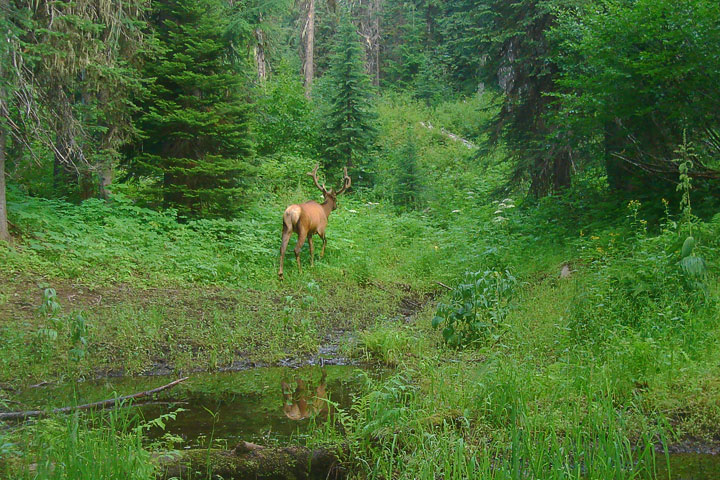 A bull elk reflected in the puddle of an elk wallow as it wanders away.
A bull elk reflected in the puddle of an elk wallow as it wanders away.
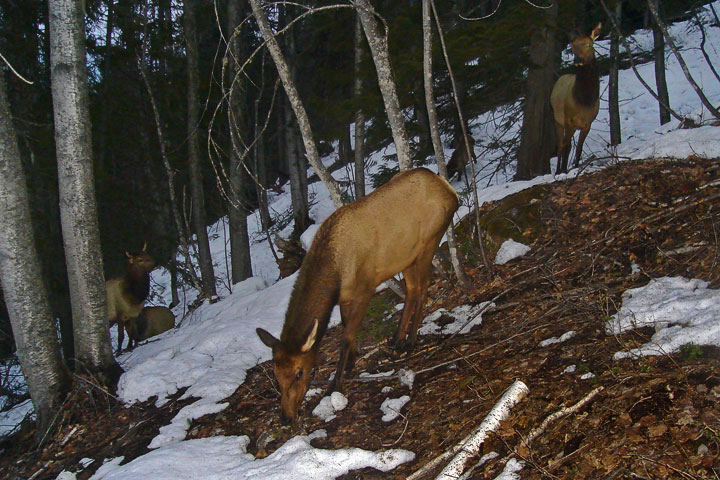 This small herd of elk is on the side of a mountain south of the West Arm. There are five elk seen in the picture, but there was at least one more farther down the slope.
This small herd of elk is on the side of a mountain south of the West Arm. There are five elk seen in the picture, but there was at least one more farther down the slope.
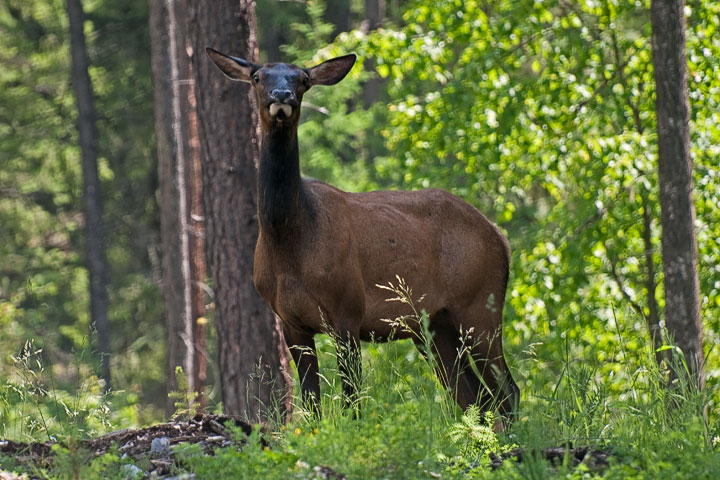 This elk was seen high on Redfish Creek.
This elk was seen high on Redfish Creek.  Doug Thorburn
Doug Thorburn
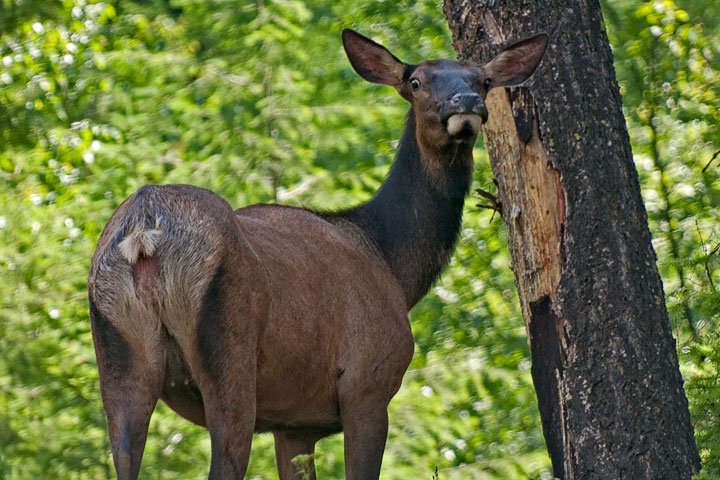 The elk cow seemed as curious about the hikers as they were of it.
The elk cow seemed as curious about the hikers as they were of it.  Doug Thorburn
Doug Thorburn
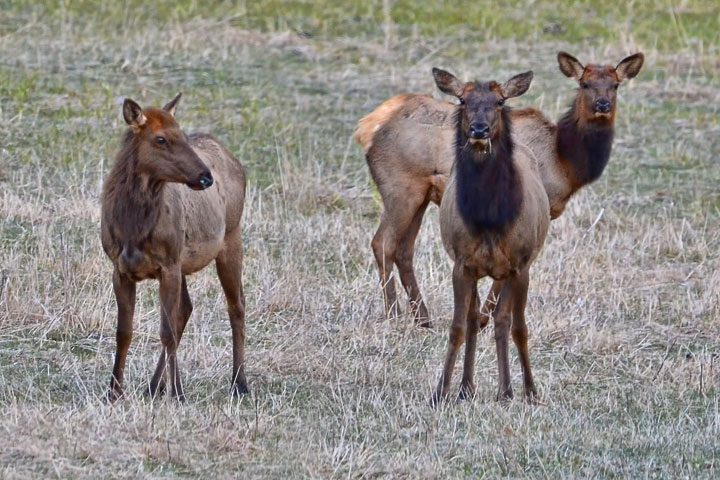 Elk graze in a farmer’s field in the early morning.
Elk graze in a farmer’s field in the early morning.
 It is early May and this bull elk had a good start on its antler growth for the season. It is undergoing its spring molt, so its coat is ragged looking.
It is early May and this bull elk had a good start on its antler growth for the season. It is undergoing its spring molt, so its coat is ragged looking.
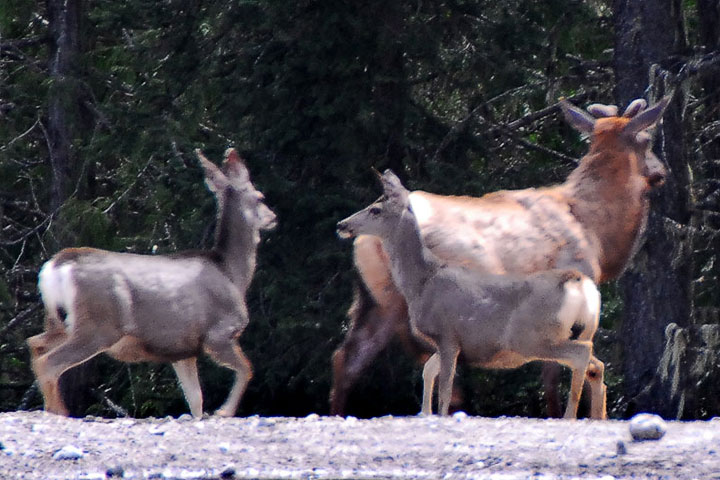 This bull elk was travelling with a herd of Mule Deer. The marked difference in size of these two animals is striking.
This bull elk was travelling with a herd of Mule Deer. The marked difference in size of these two animals is striking.
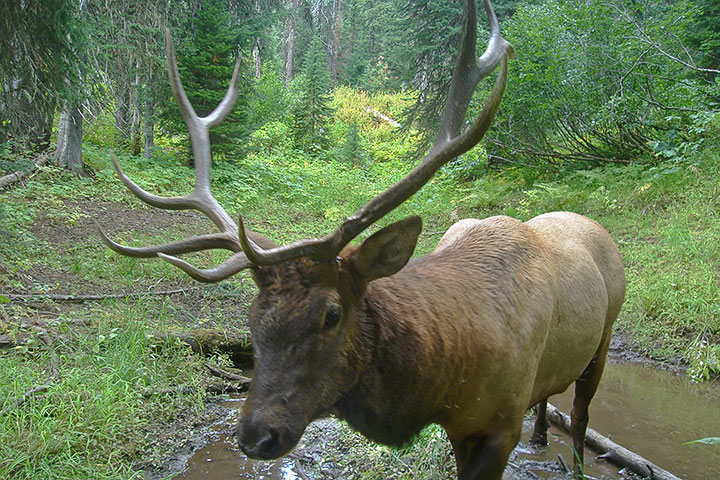 This may well be a raghorn elk—the term applied to a two– or three–year old buck with three– to five–pointed antlers. An adult will have five or six points. The elk sheds its antlers in the late winter and early spring and soon starts growing new ones. This elk is wandering through an elk wallow in the Selkirks.
This may well be a raghorn elk—the term applied to a two– or three–year old buck with three– to five–pointed antlers. An adult will have five or six points. The elk sheds its antlers in the late winter and early spring and soon starts growing new ones. This elk is wandering through an elk wallow in the Selkirks.
Information from BC Ministry of the Environment: Elk in BC.
![]()